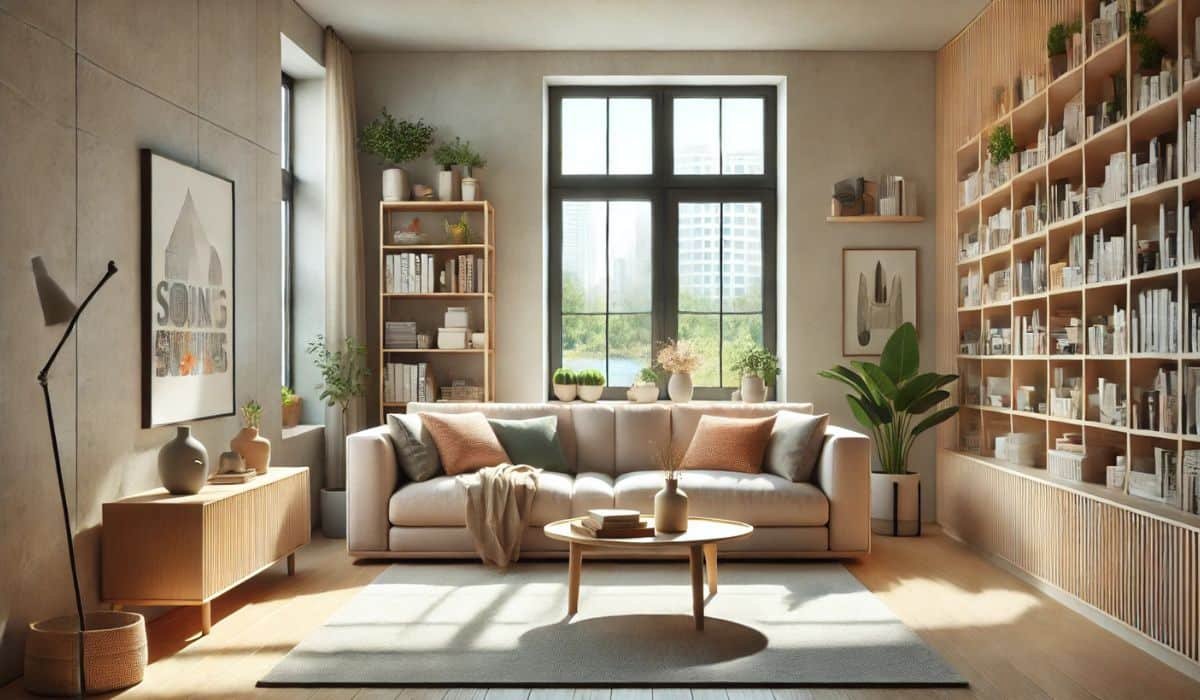In today’s fast-paced world, “living spaces” have evolved beyond just the rooms in our homes. It now encompasses our surroundings’ aesthetic, functional, and emotional aspects.
Whether designing your home, apartment, or even a small studio, creating a living space that balances comfort, style, and functionality is critical to improving your quality of life.
This article will explore the importance of living spaces, various design trends, and practical tips for creating a harmonious and inspiring environment.
Contents
The Importance of Well-Designed Living Spaces
A well-thought-out living space can have a profound impact on our daily lives. Here are some reasons why investing time and effort into designing a living space is essential:
1. Comfort and Well-Being
You spend significant time in your living space, whether relaxing, working, or entertaining. A comfortable space improves mental and physical well-being. This comfort comes from thoughtful furniture placement, cozy textures, lighting, and temperature control. When your home environment aligns with your needs, it becomes a refuge from the stresses of daily life.
2. Aesthetic Appeal
Living spaces reflect your personality and taste. A beautifully designed space creates an inviting atmosphere that pleases the eye and enhances the ambiance. A cohesive design that matches your style helps create a space where you feel inspired and content.
3. Functionality and Organization
Designing your living space with functionality in mind ensures that the area works for your daily routine. Practical storage solutions, multi-functional furniture, and space-efficient layouts can help you stay organized, make the most of available square footage, and reduce clutter. A well-organized space can reduce stress and improve Productivity.
4. Boosting Productivity
Creating a conducive living space for Productivity is crucial for working from home or studying with children. A well-designed office or study area within your home can boost concentration and efficiency. Ergonomic furniture, natural light, and designated workspaces are essential for a productive living space.
Design Trends for Living Spaces
Interior design trends constantly reflect new lifestyle needs, technological advances, and environmental concerns. Here are some current trends in living space design that can help elevate your home.
1. Minimalism
Minimalism continues to be one of the leading trends in modern interior design. The “less is more” philosophy emphasizes clean lines, uncluttered spaces, and a neutral color palette. Minimalist living spaces focus on functionality and simplicity, creating a serene and open atmosphere. This style is handy for small living spaces where maximizing space is critical.
2. Biophilic Design
Bringing nature indoors is a popular trend in interior design. Biophilic design focuses on connecting occupants with the natural world using plants, natural light, and organic materials like wood, stone, and bamboo. This approach helps create a calming, fresh environment while improving indoor air quality.
3. Multi-Functional Furniture
As more people live in smaller apartments or homes, multi-functional furniture is becoming a staple in living space design. These pieces, from sofa beds to foldable desks and modular shelving units, help maximize space without sacrificing style or comfort.
4. Sustainable and Eco-Friendly Materials
Sustainability is a growing priority in interior design. Many homeowners and designers opt for eco-friendly materials like reclaimed wood, bamboo, and recycled metals. Energy-efficient appliances and smart home technology contribute to a more sustainable living space.
5. Color Psychology
Colours significantly impact mood, and many designers are paying more attention to colour psychology when creating living spaces. Calming hues like soft blues, greens, and neutral shades are popular for bedrooms and relaxation areas, while bold, vibrant colors like yellow and orange are used to energize social spaces.
6. Open Floor Plans
Open floor plans continue to dominate modern home design. Removing walls between the kitchen, dining, and living areas creates a spacious, flowing environment that encourages social interaction. This layout works well for families or those who frequently entertain guests.
Practical Tips for Creating the Perfect Living Space
Whether you’re moving into a new home or simply redecorating, these practical tips can help you create a living space that is both beautiful and functional.
1. Define the Purpose of Each Room
Before designing, consider the purpose of each room. Do you need a cozy nook for reading, a productive home office, or a spacious area for entertaining? Defining the function of each space will guide your design choices and ensure that every element serves a purpose.
2. Maximize Natural Light
Natural light can make any space feel more open and inviting. Maximize the amount of natural light by using light window treatments, strategically placing mirrors to reflect light, and choosing light-colored paint for walls. If natural light is limited, use layered lighting to create a bright, welcoming atmosphere, such as floor lamps, table lamps, and overhead lights.
3. Choose the Right Furniture
Furniture plays a crucial role in your living space’s functionality and aesthetic. Choose pieces that fit the scale of your room, and consider investing in multi-functional furniture if space is limited. Sofas with storage compartments, extendable dining tables, or modular shelving units can help you optimize space.
4. Create Visual Balance
Balance is critical to creating a cohesive living space. Use symmetry in your design to create a sense of order and calm. For example, matching lamps on either side of a sofa or an evenly spaced gallery wall can help create visual harmony.
5. Personalize Your Space
Your living space should reflect your personality and tastes. Add personal touches such as artwork, family photos, or decorative items that have sentimental value. These elements can make your home feel more authentic and inviting.
6. Stay Organized
Clutter can quickly make a living space feel chaotic. Invest in storage solutions like shelving units, baskets, and built-in closets to keep things organized. Creating designated spaces for everyday items can help reduce clutter and make your living area more functional.
Conclusion
Your living space is more than just a place to eat, sleep, and work. It reflects your lifestyle, personality, and needs.
Whether designing a minimalist studio apartment or a spacious family home, focusing on comfort, style, and functionality will help you create a living environment that enhances your overall quality of life. Embrace design trends that resonate with your style, and use practical strategies to develop your space uniquely.
By prioritizing these elements, you can transform your living space into a sanctuary that promotes well-being, creativity, and happiness.











